
GINZA CONNECTIVE
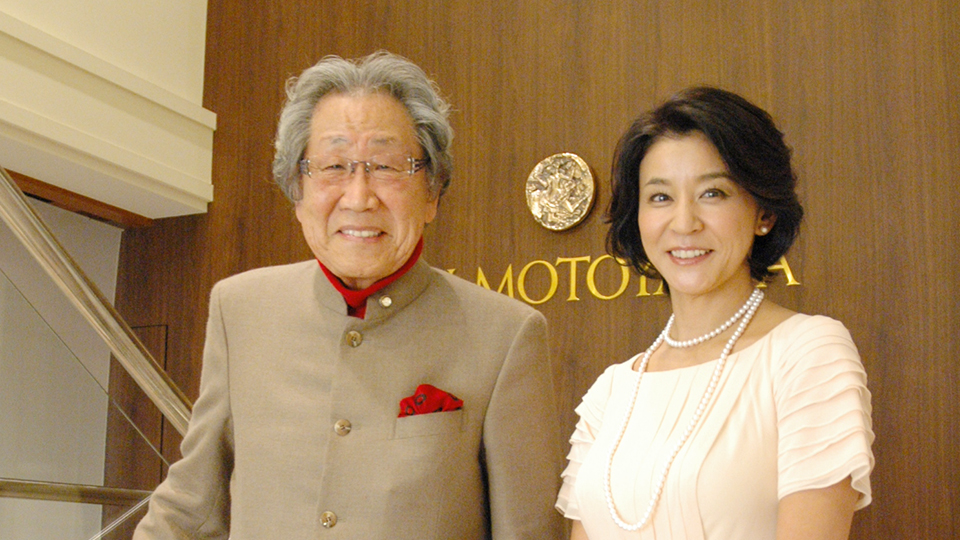
GINZA CONNECTIVE VOL.5
Choichiro Motoyama×Chisako Takashima
2012.02.01
A talk series with the violinist Chisako Takashima and the Ginza people. Ginza holds many personal and professional memories for Takashima. In this talk series, she thoroughly explores various aspects of the Ginza culture with her guests. Today’s guest is Choichiro Motoyama, Chairman of Sun Motoyama who was among the first to introduce luxury European brands to Japan.
I was deeply moved by beautiful products that caught my eye in the Tianjin settlement.
- Takashima
- What is the origin of the shop name Sun Motoyama?
- Motoyama
- My family ran a knit goods wholesale business on Nihonbashi. The name of the shop was Sun Meias. The name of my current shop comes from there and also holds the sense of shining like the sun.
Back in the day, Nihonbashi was known as a wholesale district, and Ginza known as a retail district. - Takashima
- You didn’t succeed the family business?
- Motoyama
- No, I didn’t. I wanted to buy things I liked in foreign countries and sell them to customers. I served in China during the Pacific War, and was deeply moved by beautiful items that caught my eye in the Tianjin settlement that were like nothing I had ever seen before. Right then I knew I wanted to introduce them to Japan, that I wanted to sell foreign culture.
- Takashima
- That was the beginning of your current business?
- Motoyama
- Yes. After returning to Japan, I opened a small shop in front of Yurakucho station that sold American goods. The shop had watches, fountain pens, lighters, dress shirts, neckties and a ton of other things that were still rare in Japan at the time. Products would sell faster than I could put them on the shelves. That was how it was then.
- Takashima
- Really? That’s surprising.
- Motoyama
- Then, I was approached by Yonosuke Natori, perhaps the most famous Japanese photojournalist at the time, who said to me, “There is no history or tradition in American products. If you want to sell real beauty, go to Europe.”
Natori had been working in Germany before the war, and was the first Japanese photographer whose photo made the cover of LIFE magazine. With the advice coming from someone so important, I felt I had to go. In 1959, I finally made it to Europe.
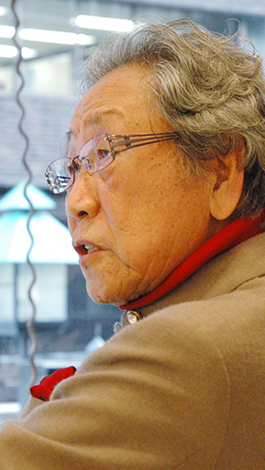
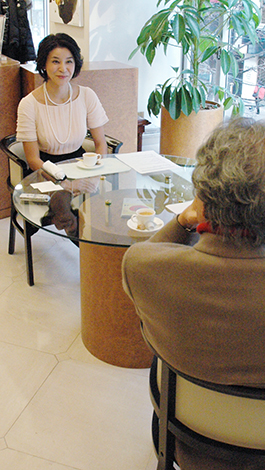
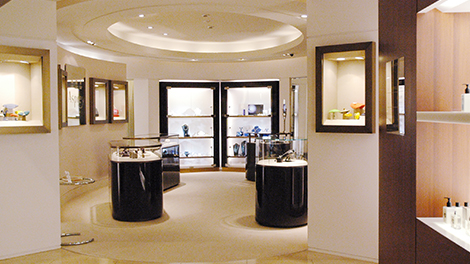
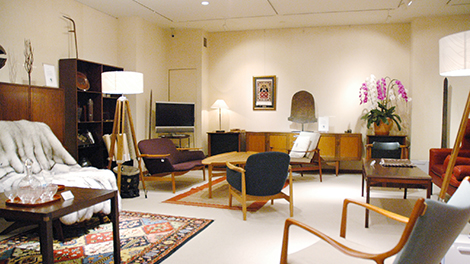
Inside the Sun Motoyama Ginza Flagship Store. The shops showcases many different products from around the world including clothing, accessories and furniture, among others.
Life is all about luck and fate.
- Takashima
- What was your impression of Europe on your first visit?
- Motoyama
- I thought it was absolutely wonderful. On that first trip, I followed Natori’s advice to do no more than “first go and see the museums and churches, then stay at a five-star hotel and eat at a luxurious restaurant.” He told me, “you will want everything you see, but on this first trip, don’t buy a single thing.” Natori wanted me to experience their lifestyle firsthand.
- Takashima
- So you didn’t buy anything that trip?
- Motoyama
- Not a thing. I would really have been in trouble without Natori’s advice (laughs). On my third visit, I encountered Gucci in Firenze. I was brought to a standstill in front of the shop window. I saw a display of products that were all like nothing I had ever seen before. I was particularly impressed by the leather products because Japan didn’t have leather goods back then. I felt inspired.
- Takashima
- I heard that you were the first to introduce Gucci to Japan. Did negotiations go smoothly?
- Motoyama
- Not at first. Customers came to Gucci from all over the world, so they did not feel the need to export their products. I kept coming back but was turned away each time.
- Takashima
- But you didn’t give up, right?
- Motoyama
- I was determined to bring Gucci products to my showcase at any cost. I refused to be discouraged, and after many visits, I met the president of Gucci who just happened to be in the shop. When giving me a personal explanation of his products, he held out a silver cigarette case to me. I immediately pulled out my handkerchief from my breast pocket to touch the case and carefully wiped off my fingerprints before returning it. Natori had told me that you shouldn’t touch silver products with your bare hands. Seeing this, the president of Gucci said to me, “you understand the value of products. Let’s do business together.”
- Takashima
- It was a fateful encounter.
- Motoyama
- I feel that life is all about luck and fate.
I got the contract with Gucci, and moved my shop from the Sanshin building in Hibiya to its current location on Namakidori the year of the Olympics, in 1964. The shop held a collection of luxury brands including Gucci, Hermes, Loewe, Baccarat and Lalique. When I opened the shop, it was probably the first in Japan, let alone Ginza, to sell only luxury foreign brand items.
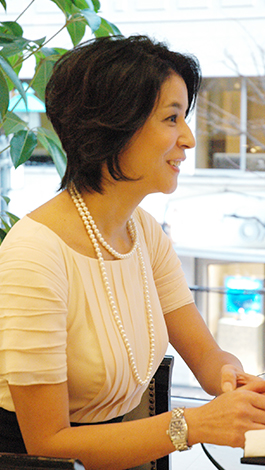
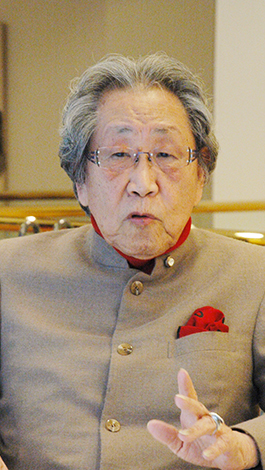
1 2
All List
- GINZA CONNECTIVE VOL.0 Ryo Sayegusa×Chisako Takashima
- GINZA CONNECTIVE VOL.1 Toshiyuki Kosaka×Chisako Takashima
- GINZA CONNECTIVE VOL.2 Yasuharu Mizuhara×Chisako Takashima
- GINZA CONNECTIVE VOL.3 Hitoshi Ishihara×Chisako Takashima
- GINZA CONNECTIVE VOL.4 Shinji Hara×Chisako Takashima
- GINZA CONNECTIVE VOL.5 Choichiro Motoyama×Chisako Takashima
- GINZA CONNECTIVE VOL.6 Noriko Okazoe×Chisako Takashima
- GINZA CONNECTIVE VOL.7 Choichiro Motoyama×Chisako Takashima
- GINZA CONNECTIVE VOL.8 Sayuri Yamaguchi×Chisako Takashima
- GINZA CONNECTIVE VOL.9 Yoshiki Tani×Chisako Takashima
- GINZA CONNECTIVE VOL.10 Yoshifumi Itoh×Chisako Takashima
- GINZA CONNECTIVE VOL.11 Kunihiko Miwa×Chisako Takashima
- GINZA CONNECTIVE VOL.12 Shin Watanabe×Chisako Takashima
- GINZA CONNECTIVE VOL.13 Akihiko Tsuda×Chisako Takashima
- GINZA CONNECTIVE VOL.14 Rie Horikawa×Chisako Takashima
- GINZA CONNECTIVE VOL.15 Jun Takahashi×Chisako Takashima
- GINZA CONNECTIVE VOL.16 Yusuke Harada×Chisako Takashima
- GINZA CONNECTIVE VOL.17 Lintaro Mizuhara×Chisako Takashima
- GINZA CONNECTIVE VOL.18 Keisuke Anzai×Chisako Takashima
- GINZA CONNECTIVE VOL.19 Hozu Yamamoto×Chisako Takashima
- GINZA CONNECTIVE VOL.20 Koji Shibata×Chisako Takashima
- GINZA CONNECTIVE VOL.21 Kayo Hosono×Chisako Takashima
- GINZA CONNECTIVE VOL.22 Mitsuru Saito×Chisako Takashima
- GINZA CONNECTIVE VOL.23 Akihisa Kawaguchi×Chisako Takashima
- GINZA CONNECTIVE VOL.24 Mamoru Sugiyama×Chisako Takashima
- GINZA CONNECTIVE VOL.25 Michiaki Kumagai×Chisako Takashima
- GINZA CONNECTIVE VOL.26 Shinichi Tanizawa×Chisako Takashima
- GINZA CONNECTIVE VOL.27 Koichi Suzuki×Chisako Takashima
- GINZA CONNECTIVE VOL.28 Munehito Matsuzaki×Chisako Takashima
- GINZA CONNECTIVE VOL.29 Hiroshi Hara × Chisako Takashima
- GINZA CONNECTIVE VOL.30 Shigeyuki Ando×Chisako Takashima
- GINZA CONNECTIVE VOL.31 Yukichi Ishikura × Chisako Takashima
- GINZA CONNECTIVE VOL.32 Seiko Yamada × Chisako Takashima
- GINZA CONNECTIVE VOL.33 Mami Nagai × Chisako Takashima
- GINZA CONNECTIVE VOL.34 Ryuta Takahashi × Chisako Takashima
- GINZA CONNECTIVE VOL.35 Kazumasa Osumi×Chisako Takashima
- GINZA CONNECTIVE VOL.36 Masahiro Kameoka×Chisako Takashima
- GINZA CONNECTIVE VOL.37 Shoichiro Watanabe×Chisako Takashima
- GINZA CONNECTIVE VOL.38 Keiji Niimoto×Chisako Takashima
- GINZA CONNECTIVE VOL.39 Chieko Nakamura ×Chisako Takashima
- GINZA CONNECTIVE VOL.40 Atsushi Yamane×Chisako Takashima
- GINZA CONNECTIVE VOL.41 Masaya Shibuya×Chisako Takashima
- GINZA CONNECTIVE VOL.42 Makoto Suzuki×Chisako Takashima
- GINZA CONNECTIVE VOL.43 Masaya Konaka×Chisako Takashima
- GINZA CONNECTIVE VOL.44 Masakazu Tanaka×Chisako Takashima
- GINZA CONNECTIVE VOL.45 Koko Kameoka × Chisako Takashima
- GINZA CONNECTIVE VOL.46 Jin Hirayama×Chisako Takashima
- GINZA CONNECTIVE VOL.47 Takashi Hoshihara×Chisako Takashima
- GINZA CONNECTIVE VOL.48 Mikiko Kimura × Chisako Takashima
- GINZA CONNECTIVE VOL.49 Keisuke Okamoto×Chisako Takashima
- GINZA CONNECTIVE VOL.50 Akira Ito × Chisako Takashima
- GINZA CONNECTIVE VOL.51 Tatsuhiko Adachi × Chisako Takashima
- GINZA CONNECTIVE VOL.52 Masahiko Yamano×Chisako Takashima
- GINZA CONNECTIVE VOL.53 Kiyoshi Kanazashi×Chisako Takashima
- GINZA CONNECTIVE VOL.54 Noriyuki Tsuji×Chisako Takashima
- GINZA CONNECTIVE VOL.55 Shoichi Kobayashi×Chisako Takashima
- GINZA CONNECTIVE VOL.56 Isao Nanjo×Chisako Takashima
- GINZA CONNECTIVE VOL.57 Shinobu Mitsuoka×Chisako Takashima
- GINZA CONNECTIVE VOL.58 Motoyoshi Yasuda×Chisako Takashima
- GINZA CONNECTIVE VOL.59 Toru Fujiki×Chisako Takashima
- GINZA CONNECTIVE VOL.60 Yuji Ida×Chisako Takashima
- GINZA CONNECTIVE VOL.61 Hitoshi Miki×Chisako Takashima
- GINZA CONNECTIVE VOL.62 Takehiko Furuya× Chisako Takashima
- GINZA CONNECTIVE VOL.63 Naoki Yoshizawa×Yusuke Yoshizawa×Chisako Takashima
- GINZA CONNECTIVE VOL.64 Kazuhito Kawase × Chisako Takashima
- GINZA CONNECTIVE VOL.65 Toshiji Yuki× Chisako Takashima
- GINZA CONNECTIVE VOL.66 Hikoyuki Yamaguchi×Chisako Takashima
- GINZA CONNECTIVE VOL.67 Daisuke Nagano×Chisako Takashima
- GINZA CONNECTIVE VOL.68 Shuichi Motohashi× Chisako Takashima
- GINZA CONNECTIVE VOL.69 Shinpei Tonaka×Chisako Takashima
- GINZA CONNECTIVE VOL.70 Shinya Kanematsu × Sachiko Takashima
- GINZA CONNECTIVE VOL.71 Masataka Yano×Chisako Takashima
- GINZA CONNECTIVE VOL.72 Mitsuhiro Kurokawa× Chisako Takashima
- GINZA CONNECTIVE VOL.73 Ryo Saegusa×Chisako Takashima








